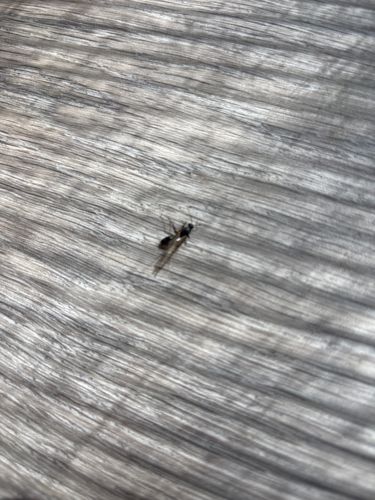Fungus Gnat
Scientific Name: Bradysia spp. (most common indoor genus), or various other genera within Sciaridae and Mycetophilidae.
Order & Family: Order: Diptera, Family: Sciaridae (darkwinged fungus gnats) or Mycetophilidae (true fungus gnats)
Size: Adults are typically 2-8 mm (0.08-0.31 inches) in length, resembling tiny mosquitoes with slender bodies and long legs.

Natural Habitat
Fungus gnats thrive in moist environments where there is decaying organic matter and fungi, making them common in greenhouses, nurseries, and homes with houseplants. They are often found near sinks, drains, and overwatered potted plants with consistently damp soil.
Diet & Feeding
Adult fungus gnats typically do not feed or feed on liquids like water and nectar. However, their larvae feed on fungi, decaying organic matter, and plant roots, especially in moist soil. They are particularly drawn to fungi and algae present in damp conditions.
Behavior Patterns
Adult fungus gnats are attracted to light and are often seen flying or resting near windows indoors. They have a short adult lifespan of about 7-10 days, during which the females lay eggs in moist soil. Larvae develop in the soil, feeding on fungi and decaying organic matter for about 2-3 weeks before pupating, and then emerging as adults. Their populations can explode quickly in favorable conditions.
Risks & Benefits
Potential risks include being a nuisance pest indoors, especially in large numbers. While adults don't bite or transmit diseases, their larvae can cause damage to plant roots, leading to stunted growth, wilting, or plant death, particularly in seedlings and cuttings. They can also indicate overwatering issues with houseplants. Benefits are negligible, though they contribute to decomposition in natural environments.
Identified on: 8/22/2025